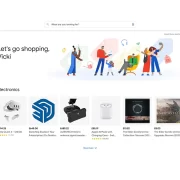In today’s competitive digital landscape, small business owners face the constant challenge of making every marketing euro or dollar count. One crucial metric that can guide this effort is Return on Ad Spend (ROAS). Understanding and optimizing ROAS can significantly boost your marketing effectiveness, driving more sales and increasing brand recognition. This post explores the common pitfalls, myths, frequently asked questions, limiting beliefs, challenges, and desired outcomes related to maximizing ROAS through measurable marketing.
Common Mistakes Small Business Owners Make
Maximizing ROAS requires a strategic approach, yet many small business owners fall into several common traps. One frequent mistake is not tracking all relevant metrics. While vanity metrics like likes and shares might seem impressive, they don’t always correlate with actual sales. Another pitfall is ignoring customer feedback, which can provide valuable insights into your marketing performance.
Additionally, many businesses overlook the importance of A/B testing different elements of their campaigns. This testing can reveal what works best for your audience, but it’s often neglected. Failing to segment your audience and not adjusting your budget based on performance are other significant mistakes that can hamper your ROAS.
Debunking Myths About ROAS
Several myths about ROAS persist in the business community. One common misconception is that more ad spend always equals better results. In reality, effectiveness hinges on strategic spending, not just volume. Another myth is the idea that a single campaign can cater to all audiences. Tailoring your approach to different segments is crucial for success.
Some believe digital marketing is easy and doesn’t require professional expertise. However, the ever-evolving landscape of digital marketing demands continuous learning and adaptation. Another persistent myth is that only big brands can track and optimize ROAS effectively. Small businesses can also leverage sophisticated tools and strategies to achieve impressive results.
Frequently Asked Questions About ROAS
Understanding ROAS often raises several questions. Business owners frequently ask, “What exactly is ROAS?” Simply put, ROAS measures the revenue generated for every dollar spent on advertising. Another common question is, “How can I track ROAS effectively?” Utilizing analytics tools and setting up proper tracking mechanisms are essential steps.
“Which metrics should I focus on?” is another critical query. While metrics like click-through rates (CTR) and conversion rates are important, focusing on the ultimate return on your ad spend is paramount. “How can I segment my audience?” and “What budget should I set?” are also vital questions that need careful consideration to maximize your marketing efforts.
Limiting Beliefs Hindering ROAS Optimization
Many business owners harbor limiting beliefs that can stifle their marketing potential. A common belief is that they can’t afford digital marketing. In truth, effective marketing strategies can be scaled to fit various budget sizes. Another belief is that their business isn’t big enough to benefit from sophisticated marketing techniques. This mindset can prevent them from exploring effective strategies that could significantly boost their sales.
Some owners think they can’t compete with big brands and that their audience isn’t online. In reality, a well-targeted strategy can carve out a profitable niche in even the most competitive markets. The belief that marketing is too complicated or that they don’t have enough time to learn it is another barrier. Partnering with marketing experts can help overcome these challenges.
Overcoming Challenges in Maximizing ROAS
Several challenges can impede the optimization of ROAS. High ad costs and low conversion rates are common hurdles. Small businesses often struggle with poor audience engagement and lack of marketing knowledge. Competing with larger brands and limited budgets add to the complexity.
Time constraints and keeping up with marketing trends also pose significant challenges. Measuring the effectiveness of marketing efforts and creating engaging content can be daunting tasks. However, addressing these challenges is crucial for maximizing ROAS and achieving sustainable business growth.
Achieving Desired Outcomes
The ultimate goal of maximizing ROAS is to increase sales and improve brand visibility while making the most of your marketing budget. Achieving a higher ROAS means better audience targeting, improved ad performance, and effective budget management. This leads to increased brand awareness and better customer engagement, driving higher conversion rates.
By focusing on measurable marketing strategies, small business owners can optimize their campaigns, ensuring every dollar spent contributes to their growth. Leveraging data-driven insights and continuously refining marketing tactics are key to achieving these desired outcomes.
Maximizing ROAS through measurable marketing is not just about spending more but spending smarter. By avoiding common mistakes, debunking myths, addressing limiting beliefs, and overcoming challenges, small business owners can significantly enhance their marketing effectiveness. Focusing on desired outcomes and employing strategic, data-driven approaches will ensure that your marketing efforts yield the best possible returns. Embrace these principles, and watch your e-commerce business thrive.
Keep on reading...

Riding the Pros and Cons of Integrating ERP Systems with E-commerce Platforms
ERP e-commerce integration refers to the process of connecting an e-commerce platform (e.g. WooCommerce) with an ERP system. This allows

Create a Winning Pitch Deck for your Startup
We’ve worked on pitch decks for investor pitching, in private, and for public pitching events; and of course we’ve built



